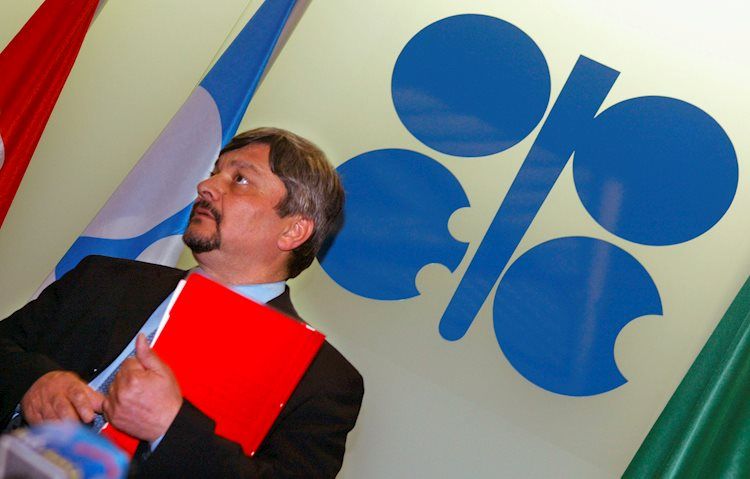- Oil (WTI) not enjoying the week as it trades below $90.
- The US Dollar printed a new high in the US Dollar Index, flirting with the 52-week high.
- Despite supply cut confirmations and US stockpile drawdowns, prices remain under pressure.
Oil prices already had a busy morning this Wednesday with OPEC+ issuing its report. No surprises there as both Russia and Saudi Arabia keep their commitment to cut until December. Meanwhile, the American Petroleum Institute (API) issued its recent numbers overnight, communicating a drawdown of -4.21 million barrels last week against the build of 1.586 million the previous week.
The US Dollar (USD), meanwhile, is gearing up for a very nervous trading day, while the US Dollar Index (DXY) resides near the high of the past 48 weeks. Expect to see a pick up in volatility as not only a big batch of data points is due to come out. But the Polish central bank is due to issue its next rate decision, and it promises to be a surprise after last week’s 75 basis point cut.
Crude Oil (WTI) trades at $86.49 per barrel, and Brent Oil trades at $89.83 per barrel at the time of writing.
Oil news and market movers
- Wednesday’s OPEC+ report had Saudi Arabia and Russia reaffirming plans to curb oil production by 1 million barrels per day for Saudi Arabia and 300,000 barrels per day for Russia until the end of the year. The report went on to say that the measure is intended “to reinforce the precautionary efforts made by OPEC+ countries with the aim of supporting the stability and balance of oil markets.”
- Russia said that a partial lift of the current fuel export ban has been discussed, according to TASS.
- The current downturn in oil prices, despite these supply cuts, has mainly contributed to the current elevated level in US yields. Expectations are that demand will start to kill off and turn the current target lower as supply scales above a demand fall-off.
- As any normal Wednesday, the Energy Information Administration (EIA) is due to release its stockpile changes in the US. Expectations again call for a drawdown, this time from -2.17 million barrels to -0.092 million. The Cushing strategic stockpile reserve will get even more attention. Last week, it was already at a critical low level. Expect numbers to be issued near 14:30 GMT.
Oil Technical Analysis: Blame US Treasury yields
Oil prices drop like a stone despite OPEC+ trying to ramp up prices by confirming its current production cuts until the end of the year. Though in September markets set oil prices soaring on the back of that announcement, those same comments today are pushing prices lower. The current elevated level in US yields against the lower levels in September makes traders assess that demand will soon come to a standstill, where current total supply might be more than enough to deal with the slashed demand.
On the upside, the double top from October and November of last year at $93.12 remains the level to beat. Although it got breached on Thursday, the level never got a daily close above it. Should $93.12 be taken out, look for $97.11, the high of August 2022.
On the downside, a new floor has formed near $88, with the high of September 5 and 11 underpinning the current price action. Proof of this already exists with the dip of September 13 and September 21, which reversed ahead of $88. Should $88 break, the peak of August 10 needs to be enough to catch the dip near $84.20.
US Crude (Daily Chart)
Natural Gas FAQs
Supply and demand dynamics are a key factor influencing Natural Gas prices, and are themselves influenced by global economic growth, industrial activity, population growth, production levels, and inventories. The weather impacts Natural Gas prices because more Gas is used during cold winters and hot summers for heating and cooling. Competition from other energy sources impacts prices as consumers may switch to cheaper sources. Geopolitical events are factors as exemplified by the war in Ukraine. Government policies relating to extraction, transportation, and environmental issues also impact prices.
The main economic release influencing Natural Gas prices is the weekly inventory bulletin from the Energy Information Administration (EIA), a US government agency that produces US gas market data. The EIA Gas bulletin usually comes out on Thursday at 14:30 GMT, a day after the EIA publishes its weekly Oil bulletin. Economic data from large consumers of Natural Gas can impact supply and demand, the largest of which include China, Germany and Japan. Natural Gas is primarily priced and traded in US Dollars, thus economic releases impacting the US Dollar are also factors.
The US Dollar is the world’s reserve currency and most commodities, including Natural Gas are priced and traded on international markets in US Dollars. As such, the value of the US Dollar is a factor in the price of Natural Gas, because if the Dollar strengthens it means less Dollars are required to buy the same volume of Gas (the price falls), and vice versa if USD strengthens.

